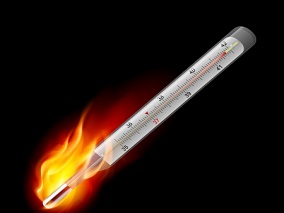13岁少年血压升高 6个科室会诊方确定病因
13岁女孩,6年前因视物模糊无意中发现左室增大,血压不详。3年前,偶测血压发现血压增高,最高可达170/110mmHg,检查发现右肾体积缩小、左肾多发结石。当前,因心慌胸闷2周前来就诊。最终6个科室的医生会诊,才确定真正的病因。
病史摘要
患者女,13岁,2015年11月5日入院。
主诉:发现左室肥厚6年余,发现血压升高3年余,心慌2周。
现病史:患者6年余前因视物模糊就诊于当地医院,眼底检查提示眼底血管出血,后于治疗前完善心电图检查时发现左室增大(血压不详),当时无头晕、头痛,未予重视。5年前就诊于××医院完善超声心动图检查提示室间隔及左室肥厚、左室扩大,二尖瓣、主动脉瓣轻度反流,EF51%(血压不详),考虑遗传相关肥厚型心肌病,予营养心肌治疗,此后规律复查,心电图、超声心动图较前无明显变化。3年前偶测血压发现血压增高,最高可达170/110mmHg,于当地医院行腹部CT检查提示:右肾体积缩小、左肾多发结石。就诊于××医院测血压200/110mmHg,肾脏彩超示右肾缩小,肾动脉彩超未见异常。考虑右肾发育不良、高血压、高血压心肌损害,予氨氯地平、奥美沙坦降压治疗。后于××医院完善肾图检查见右肾缩小、血流灌注差、功能严重受损,右肾肾小球滤过率8ml/min;完善动脉彩超示右髂动脉狭窄;免疫相关检查示ANA、ds-DNA升高。因考虑不符合狼疮且大动脉炎诊断证据不充分,嘱其继续口服降压药物控制血压。此后患者长期口服氨氯地平+奥美沙坦+美托洛尔降压,间断更换氨氯地平为硝苯地平控释片,血压可维持于140/80mmHg左右。期间规律复查肌酐波动于57~93mmol/L,尿蛋白(+/-),超声心动图提示左室肥厚亦较前减轻。近2周来间断出现发作性心慌、胸闷,发作时测心率、血压增高。现为进一步诊治收住院。自发病以来,有活动后右下肢疼痛,休息后可减轻;无发作性大汗、面色潮红、多尿、发作性弛缓性瘫痪、血尿、水肿等,精神、睡眠可,大小便正常,体重无明显下降。
既往史、个人史、家族史:4年半前右肱骨内上髁骨折;无肝炎病史及其密切接触史,无结核病史及其密切接触史,无手术史,无血制品输注史,无过敏史,预防接种史按计划进行。足月剖宫产,出生体重2.75kg。父母体健。
体格检查
T37℃,.89次/分,.18次/分,BM.21.45,BP:150/95mmHg(右上肢)、150/90mmHg(左上肢)、110/65mmHg(右下肢)、170/110mmHg(左下肢)。
神清语明,全身皮肤黏膜未见皮疹及出血点。浅表淋巴结未触肿大。双肺呼吸音清,未闻及干湿性啰音。心率89次/分,律齐,各瓣膜听诊区未闻及异常心音及杂音。腹平软,无压痛、反跳痛及肌紧张,肝脾肋下未触及,双下肢无水肿,右侧足背动脉、右股动脉搏动明显减弱。
辅助检查
全血细胞分析:血红蛋白含.119g/L,红细胞平均体.72.4fl↓,平均红细胞血红蛋白含.24.5pg↓,余正常;
生化:丙氨酸氨基转移.15U/L,门冬氨酸氨基转移.15U/L,总蛋.77.8g/L,白蛋白46.0g/L,肌.94μmol/L↑,尿.429μmo./L↑,低密度脂蛋白胆固.1.32mmol/L↓,结合胆红.8.2μmol/L↑,eGF.79.59ml/(min·1.73m2)。
血清同型半胱氨酸:22.70μmol/L↑;贫血检测、贫血组合:铁5.03μmo./.↓,不饱和铁结合力55.28μmol/.↑,铁蛋白11.7ng/m.↓。
自身抗体谱:抗内皮细胞抗体1∶10阳性。
凝血功能、糖化血红蛋白、甲状腺功能5项、BNP、免疫八项、血沉、尿、便常规:无异常。
尿微量白蛋白定量/肌酐:2.4mg/g;24小时尿蛋白定量及定性:24小时尿蛋白:0.05g/d。
肾素-血管紧张素-醛固酮系统:肾素活性:>24.00ng/(ml·h)↑,血管紧张素:>800pg/ ml↑,醛固酮155pg/ml(服药:酒石酸美托洛尔25m.bid,氨氯地平5m.qd,奥美沙坦20m.qd)。
心电图:左室高电压(心前区导联1/4电压)(图44-1);
图44-1心电图
Holter:共记录心搏12.510次(23:59),窦性心律,平均心率90次/分;最快心率133 次/分,发生于12:53,最慢心率66次/分,发生于04:13;房性期前收缩1次,室性期前收缩1次;ST段J点抬高,不除外早期复极。
动态血压监测:24小时动态血压呈非杓型分布;24小时平均血压132/75mmHg;白天平均收缩压137mmHg,白天平均舒张压80mmHg;夜间平均收缩压124mmHg,夜间平均舒张压64mmHg;全天血压间断轻、中度升高;无晨起高血压现象。
超声心动图:左房前后径、主动脉根部内径、升主动脉内径、E/A等无明显异常,余见表44-1(附既往检查结果)。
表44-2超声心动图结果
肢体动脉功能检测:血压:右上臂143/78mmHg,左上臂140/77mmHg,右脚踝79/56mmHg,左脚踝115/68mmHg;baPWV:右693cm/s,左922cm/s;ABI:右下肢0.55,左下肢0.80。
腹部及肾上腺超声:右肾7.5cm×4.0cm×4.2cm,实质厚1.1cm,左肾11cm×5.2cm× 5.1cm,实质厚1.8cm;肾上腺未见异常。下肢动脉:腹主动脉、右侧髂总动脉,右侧股总动脉、腘动脉缩窄,考虑大动脉炎可能,必要时与动脉肌纤维发育不良鉴别。肾动脉:右肾起始处肾动脉流速增高,轻度狭窄不除外。锁骨下动脉、上肢动脉、颈动脉:未见明显异常。
胸部正位X线片、头部CT:未见明显异常。
散瞳眼底:双眼视网膜动脉细,略迂曲,迂曲程度较5年前好转,眼底未见缺血性改变,双眼视乳头边界清,色略淡,眼底未见其他活动性病变。
既往检查结果:心脏磁共振(2015年10月):左房(31mm)、左室(47mm)内径正常,左室普遍偏厚(室间隔12~15mm,左室游离壁11~12mm),射血分数53.8%,心肌收缩率、舒张期顺应性降低,无流出道狭窄。腹部CT(2013年3月):右肾体积缩小、左肾多发结石,双肾上.(-)。腹部彩超(2013年3月):右肾7.5cm×2.8cm,左肾11.8×5.4cm。腹部彩超(2013年5月):右肾7.7cm×3.3cm×2.4cm,左肾9.9cm×5.6cm×4.8cm。肾动脉彩超(2013年5月):左肾动脉干流速93cm/s,右肾动脉干流速74cm/s。生化(2013年5月):K.4.6mmol/L,CR.57μmo./L。24小时尿蛋白(2013年5月):尿蛋白0.47g/24h,尿量1250ml/24h。肾图(2013年5月):右肾小、血流灌注差、功能严重受损,GFR:左43ml/h,右8ml/h。肢体动脉彩超(2013年5月):右髂动脉狭窄,大动脉炎?颈动脉、锁骨下动脉未见异常。ANCA、CRP、ESR(2013年5月):阴性;ANA:1∶100;ds-DNA:199IU/ml。
入院诊断
血压升高原因待查:多发性大动脉炎?视网膜血管畸形?
诊治经过与诊治思维
1.简要治疗经过
入院后继续原有药物治疗,进一步完善相关检查。入院时服用美托洛尔25m.bid、氨氯地平5m.qd、奥美沙坦20m.qd,血压150/85mmHg,心率89次/分;调整药物为贝尼地平8m.qd、奥美沙坦20m.qd、美托洛尔37.5m.bid,血压:130/60mmHg,心率76次/分左右。
2.多科室病例讨论
本例患者为13岁女患,主因“发现左室肥厚6年余,血压升高3年余,心慌2周”收入院。目前主要存在以下几个问题:①明确血压升高的原因:继发性?原发性?②明确肾脏病变的原因:高血压造成肾损害?肾动脉/肾脏疾病?③明确患者眼部病变的原因:与高血压相关?视网膜血管畸形?大动脉炎引起?④指导下一步诊治。
(1)眼科意见:
大动脉炎时眼部主要表现为眼动脉供血不足,亦称无脉征,可有静脉迂曲扩张及血管瘤的形成等。但该患者的眼部病变不是眼缺血的表现,故患者眼部病变不是由大动脉炎引起。该患者在2010年检查显示生理盲点扩大,考虑是由于高血压导致颅内压升高,进而导致视乳头水肿引起。另外,患者视网膜动脉瘤也可由高血压解释。视网膜动脉瘤不是真性的瘤子,而是高血压引起的囊性扩张。既往患者曾于外院诊断为视网膜炎等,综合患者情况,考虑该诊断不成立。该患右眼自幼视力差,右眼视力模糊5年,当时不合并头痛。查体双上肢脉搏正常搏动,双眼前段无异常。散瞳眼底:双眼视网膜动脉细,略迂曲,迂曲程度较5年前好转,眼底未见缺血性改变,双眼视乳头边界清楚,色略淡,眼底未见其他活动性病变。印象:双眼底表现符合高血压诊断,目前不支持眼底缺血诊断。建议完善眼底相、眼底荧光血管造影、眼动脉血流、OCT、视野。眼动脉血流和眼底血管造影可以鉴别是否是大动脉炎,OCT观察黄斑功能。若患者肾功能不全不能行眼底血管造影,可以行眼底图检查。
(2)风湿免疫科意见:
高血压一般引起双肾病变,该患者目前考虑肾脏病变引起血压升高。该患者的眼部病变考虑是高血压引起的,因为多发性大动脉炎时一般不会引起小动脉受累。综合考虑患者目前情况,考虑多发性大动脉炎的诊断基本明确,目前为非活动期,确定下一步的治疗方案尤为重要。常规建议保留右肾,因为即使切除右肾,也不一定会使血压下降。建议结合外科意见综合考虑下一步治疗方案。若以内科治疗为主,可以考虑给予甲氨蝶呤15mg每周1次,泼尼松每天10片(50mg/d)。甲氨蝶呤需长期服用;但是泼尼松可引起血压升高等,使用时需密切监测。服用泼尼松1个月后,逐渐减量,每两周减半片。使用过程中监测血压等,3个月时复查肝功能、血常规等。
(3)泌尿外科意见:
患者目前的eGFR为79.59ml/(min·1.73m2),提示右肾仍有一定的肾功能,建议保留右肾。建议行血管造影及分段取血、肾脏磁共振或CT检查,以判断高血压是否由右肾引起,若是单纯的右肾病变引起则具备手术指征,但建议首先考虑血管外科的介入治疗,如果无效再行右肾切除。该患者目前不能单纯归因于右肾病变,自体右肾移植暂时无太大意义。该患者的肾图结果需进一步明确,必要时可复查。
(4)儿科意见:
大动脉炎好发于儿童,6~10岁多见,女性占80%左右。且儿童大动脉炎多与结核有关,占80%。该患者既往曾出现自身抗体的增高,目前多发性大动炎诊断基本明确。建议筛查PPD等,以明确是否由结核引起。同时,可复查肾图,以便进一步明确肾功能情况。
(5)血管外科意见:
该患者年龄小,仍处于生长发育期,因此目前暂不适合行动脉支架介入治疗。正常人腹主动脉直径在20mm左右,该患者腹主动脉最狭窄处直径6mm,严重狭窄,也可以引起血压升高。故切除右肾,血压不一定会下降。该患者右侧足背动脉、右股动脉搏动明显减弱。该患者需进一步明确腹主动脉狭窄部位,是在肾动脉开口处以下还是在其上方。若狭窄段在肾动脉开口处以下,则暂不考虑行介入治疗;患者下肢间歇性跛行可暂以锻炼为主,必要时加用西洛他唑改善下肢动脉供血以及阿司匹林等预防血栓形成。可考虑行大动脉CTA或MRA等检查,评估整体血管病变情况,进一步考虑是否有外科介入指征。目前建议先以内科治疗为主,外科干预主要为补救性措施,且外科治疗后容易复发。
(6)心内科意见:
该患者年龄偏小,病情复杂,综合患者目前情况,考虑诊断为多发性大动脉炎。与患者家属充分沟通后,可考虑先给予免疫抑制治疗,同时完善CTA及肾脏磁共振等,观察血管狭窄程度,判断是否需行外科介入治疗。目前患者肾素水平增高明显,必要时可考虑行分段取血检查,判断肾素分泌来源。目前可予奥美沙坦,美托洛尔缓释片及CCB降压治疗,同时观察肾素水平的变化。若给予抑制肾素的相关药物治疗后,患者肾素水平下降,必要时则可以考虑进一步行外科介入治疗。
专家点评
该患者6年余前因视物模糊就诊于当地医院时,完善心电图检查时发现左室增大,曾于诊室测血压,曾发现血压增高,但未对血压异常情况予以重视。5年前超声心动图检查提示室间隔及左室肥厚、左室扩大,二尖瓣、主动脉瓣轻度反流,此时仍未对血压情况进一步明确,而考虑遗传相关肥厚型心肌病,此后仅规律复查心电图、超声心动图等。该患者3年前偶测血压,明确血压增高,最高可达170/110mmHg;此时完善了有关高血压的部分相关检查,以及部分免疫学的相关检查。但是,仍缺乏进一步完整的系统诊治过程。
该患者早期主要表现为视物模糊、眼底出血等眼科症状等,后期发现血压增高、肾动脉血流异常、髂动脉狭窄、双肾不等大、肾功能异常、免疫学指针异常等,此时即应高度怀疑多发性大动脉炎。
随访情况
该患者于风湿免疫科进行多发性大动脉炎的治疗。
主要参考文献
[1] Mulatero P,Rabbia F,Milan A,et al. Drug effects on aldosterone/plasma renin activity ratio in primary aldosteronism.Hypertension,2002,40(6):897-902.
[2] Mosso L,Carvajal C,Gonzalez A,et al. Primary aldosteronism and hypertensive disease. Hypertension,2003,42(2):161-165.
[3] Young W,Stanson A,Thompson G,et al. Role for adrenal venous sampling in primary aldosteronism. Surgery,2004,136(6):1227-1235.
[4] Choi M,Scholl UI,Yue P,et al.K+ channel mutation in adrenal aldosterone-producing adenomas and hereditary hypertension. Science,2011,331(6018):768-772.
[5] Mornex R,Badet C,Peyrin L. Malignant pheochromocytoma:a series of 14 cases observed between 1966 and 1990. J Endocrinol Invest,1992,15(9):643-649.
[6] Stenström G,Svärdsudd K.Pheochromocytoma in Sweden 1958-1981:An Analysis of the National Cancer Registry Data. Acta Med Scand,1986,220(3):225-232.
[7] Manger WM. The Protean Manifestations of heochromocytoma. HormMetab Res,2009,41(9):658-663.
[8] Zelinka T,Eisenhofer G,Pacak K. Pheochromocytoma as a catecholamineproducing tumor:Implications for clinical practice. Stress,2007,10(2):195-203.
[9] Peyrin L,Cottet-Emard JM,Cottet-Emard RM,et al. Diagnosis of atypicpheochromocytomas:a challenge also for biologists. Pathologie Biologie,2001,49(3):247-254.
[10] 刘屹立,徐彪,孙强,等. 不典型肾上腺嗜铬细胞瘤. 中华泌尿外科杂志,2006,27(11):725-727.
[11] Kremf M,Lumbroso J,Mornex R,et al.Use of m-131Inodobenzylguanidine in the treatment of malignant pheochromcytoma. J ClinEndocrinol Metab,1991,72(9):455.
[12] Prejbisz A,Lenders JWM,Eisenhofer G,et al. 嗜铬细胞瘤的心血管表现(待续). 罗莉(译),谢良地(审校).中华高血压杂志,2012,(8):787-789.
[13] Manger WM. The vagaries of Pheochromocytoma. Am J Hypertens,2005,18(10):1266-1270.
[14] Pacak K,Linehan WM,Eisenhofer G,et al.Recent advances in genetics,diagnosis,localization,and treatment of pheochromocytoma.Ann Intern Med,2001,134(4):315.
[15] Batisse-Lignier M,Pereira B,Motreff P,et al. Acute and Chronic Pheochromocytoma-Induced Cardiomyopathies:Different Prognoses? A Systematic Analytical Review. Medicine (Baltimore),2015,94 (50):e2198.
[16] Fishbein L. Pheochromocytoma and Paraganglioma:Genetics,Diagnosis,and Treatment. Hematol Oncol Clin North Am,2016,30(1):135-50.
[17] Kiernan CM,Solórzano CC. Pheochromocytoma and paraganglioma:molecular testing and personalized medicine. Curr Opin Oncol,2016,28(1):5-10.
[18] Leners JW,Duh QY,Eisenhofer G,et al. Pheochromocytoma and paraganglioma:an endocrine society clinical practice guideline . The Journal of clinical endocrinology and metabolism,2014,99(6):1915-1942.
[19] Beroukhim RS,Del Nido P,Teot LA,et al. Cardiac paraganglioma in an adolescent . Circulation,2012,125(5):e322-e324.
[20] Sawka AM,Jaeschke R,Singh RJ,et al. A comparison of biochemical tests for pheochromocytoma:measurement of fractionated plasma metanephrines compared with the combination of 24-hour urinary metanephrines and catecholamines . The Journal of clinical endocrinology and metabolism,2003,88(2):553-558.
[21] Sawka AM,Prebtant AP,Thabane L,et al. A systematic review of the literature examining the diagnostic efficacy of measurement of fractionated plasma free metanephrines in the biochemical diagnosis of pheochromocytoma. BMC endocrine disorders,2004,4(1):2.
[22] Lenders JW,Pacak K,Walther MM,et al. Biochemical diagnosis of pheochromocytoma:which test is best? . JAMA,2002,287(11):1427-1434.
[23] Brown ML,Zayas GE,Abel MD,et al. Mediastinal paragangliomas:the mayo clinic experience . The Annals of thoracic surgery,2008,86(3):946-951.
[24] Imperatori A,De Monte L,Rotolo N,et al. Hypertension and intrapericardial paraganglioma:an exceptional presentation of multiple endocrine neoplasia type ⅡA syndrome . Hypertension,2011,58(5):e189-190.
[25] Liu YQ,Yue JQ. Paraganglioma of the vulva:a case report and review of the literature . International journal of clinical and experimental pathology,2013,6(10):2247-2250.
[26] Boeriu A,Dobru D,Gergescu R,et al. Gangliocytic paraganglioma:a rare cause of gastrointestinal bleeding . Journal of gastrointestinal and liver diseases :JGLD,2015,24(1):109-112.
[27] Jalil ND,Pattou FN,Combemale F,et al. Effectiveness and limits of preoperative imaging studies for the localisation of pheochromocytomas and paragangliomas:a review of 282 cases. French Association of Surgery(AFC),and The French Association of Endocrine Surgeons (AFCE) . The European journal of surgery = Acta chirurgica,1998,164(1):23-28.
[28] Somasundar P,Krouse R,Hostetter R,et al. Paragangliomas—a decade of clinical experience . Journal of surgical oncology,2000,74(4):286-290.
[29] 孙宁玲,霍勇,王继光,等.难治性高血压诊断治疗中国专家共识. 中华高血压杂志,2013,21(4):321-326.
[30] 杨建梅,郭晓蕙,董爱梅.原发性醛固酮增多症的临床特点.临床荟萃,2005,20(24):1381 -1384.
[31] 宋艳瑞,刘忠,顾淑莲. 肥厚型心肌病的致病分子机制研究进展. 遗传,2011,33(6):549-557.
[32] 刘超,张梅.皮质醇增多症所致高血压诊断与治疗.中国实用内科杂志,2009,29(10):890-892.
[33] 王志华,初少莉,陈绍行. 高血压住院患者病因及危险因素分析. 中华高血压杂志,2005,13(8):504-509.
[34] 殷艳蓉,张松林,田刚. 误诊为肥厚型心肌病的皮质醇增多症1例. 中华高血压杂志,2013,21(12):1195-1196.
[35] 张凤,金松南,文今福.甲亢性高血压家兔模型中左心房eNOS基因表达和血浆NO水平变化的意义.中国药理学通报,2011,27(10):1475-1476.
[36] 金松南,金景玉,苏延友,等.钙通道阻滞剂对甲亢性高血压大鼠胸主动脉舒张反应的影响.中国药理学通报,2009,25(12):1615-1618.
[37] 姜凤伟,单忠艳.甲状腺功能对血压的影响.中国实用内科杂志,2009,29(10):892-895.
[38] 肖志刚,陈亨芸. 特殊表现的甲亢误诊19例分析.中国误诊学杂志,2008,8(28):6912-6913.
[39] 刘力生.中国高血压防治指南2010.中华高血压杂志,2011,19(8):701-743.
[40] 周爱卿,蒋世良.先天性心脏病经导管介入治疗指南.中华儿科杂志,2004,42(3):76-81.
[41] 邱旭光.介入治疗成人主动脉缩窄后难治性高血压1例.中华高血压杂志,2013,21(8):794-796.
[42] 叶岚,郑心田,刘彤,等.先天性主动脉缩窄致高血压1例.中华高血压杂志,2012,20(7):695-696.
[43] 郑斯宏.主动脉缩窄术后高血压和高血压危象.中华胸心血管外科杂志,1996,12(3):187-189.
[44] Fatica RA,Port FK,Young EW.Incidence trends and mortality in end-stage renaldisease attributed to renovascular disease in the United State.Am J KidneyDis,2001,37(6):1184-90.
[45] Safian RD,Textor SC.Renal-artery stenosis. N Engl J Med,2001,344(6):431-442.
[46] Leung DA,Hagspiel KD,Angle JF,et al.MR angiography of the renal arteriea.Radiol Clin North AM,2002,40(4):847-865.
[47] Vasbinder GB,Nelcmans PJ,Kessels AG,et al.Accuracy of computed tomographic angiography and magnetic resonance angiography for diagnosing renal arterystenosis.Ann Intern Med,2004,141(9):674-682.
[48] de Souza AW,de Carvalho JF. Diagnostic and classification criteria of Takayasu arteritis. J Autoimmun,2014,48-49:79-83.
[49] Takashi I,Go H,Tetsuo K,et al. Sensitive Assessment of Activity of Takayasu’s Arteritis by Pentraxin3,a New Biomarker. Journal of the American College of Cardiology,2011,57:1712-1713.
[50] Kwang-Hoon L,Arthur C,Yun-Jung C,et al. The role of (18) F-fluorodeoxyglucose-positron emission tomography in the assessment of disease activity in patients with takayasu arteritis. Arthritis & Rheumatism,2012,64:866-875.
[51] Sampath S,Bhagwant Rai M,Shankaramurthy G,et al. F-18 FDG PET/CT in the evaluation of Takayasu arteritis:An experience from the tropics. Journal of Nuclear Cardiology Official Publication of the American Society of Nuclear Cardiology,2014,21:993-1000.
[52] Novikov PI,Smitienko IO,Moiseev SV. Tumor necrosis factor alpha inhibitors in patients with Takayasu’s arteritis refractory to standard immunosuppressive treatment:cases series and review of the literature. Clinical Rheumatology,2013,32:1827-1832.
[53] Schmidt J,Kermani TA,Bacani AK,et al. Tumor necrosis factor inhibitors in patients with Takayasu arteritis:experience from a referral center with long-term followup. Arthritis Care & Research,2012,64:1079-1083.
[54] Park MC,Lee SW,Park YB,Lee SK (2006) Serum cytokine profiles and their correlations with disease activity in Takayasu’s arteritis. Rheumatology 45:545-548.
[55] Hoyer BF,Mumtaz IM,Konstanze L,et al. Takayasu arteritis is characterised by disturbances of B cell homeostasis and responds to B cell depletion therapy with rituximab. Annals of the Rheumatic Diseases,2011,71:75-79.
[56] Pazzola G,Muratore F,Pipitone N,Salvarani C. Biologics in vasculitides:Where do we stand,where do we go from now? La Presse Médicale,2015,44:e231-e239.
[57] Chade AR,Zhu X,Lavi R,et al. Endothelial progenitor cells restore renal function in chronic experimental renovascular disease.Circulation,2009,119(4):547-557.
[58] Dworkin LD,Cooper CJ. Renal-Artery Stenosis.N Eng Med,2009,361(20):1972-1978.
[59] White CJ,Oline JW,Diagnosis and management of atherosclerotic renal artery stenosis:improving patient selection and outcomes.Nature Clinical Practice,2009,6(3):176-190.
[60] Lao D,Parasher PS,Cho KC,Yeghiazarians Y. Atherosclerotic renal artery stenosis—diagnosis and treatment. Mayo Clin Proc,2011,86(7):649-657.
[61] Jennings CG,Houston JG,Severn A,Bell S,Mackenzie IS,Macdonald TM. Renal artery stenosis-when to screen,what to stent?. Curr Atheroscler Rep,2014,16(6):416.
[62] Vest AR,Cho LS.Hypertention in Pregnancy .Cardiol Clin,2012,30(3):407-423.
[63] Magee LA,Helewa M,moutguin JM,et al.Treatment of the hypertensive disorders of pregnancy,In Diagnosis,evaluation and management of the hypertensive disorders of pregnancy .J Obstet gynecol Can,2008,30(Suppl 2):S24-36.
[64] National Collaborating Center for Women’s and Children’s health. Hypertention in pregnancy,The management of hypertensive disorders during pregnancy. Obstetric Anesthesia Digest,2011,31(3):365-375.
[65] 韩治伟,范书英,李菁,等. 妊娠高血压的治疗进展.中国全科医学,2012,15(26):2978-2982.
[66] Steegers EA,Dadeiszen PV,Duvekot JJ,et al.Pre-eciampsia . Lancet,2010,376(9741):631-644.
[67] 张馨,黎磊石,孙骅,等.不同类型IgA肾病的流行病学及临床特点分析.肾脏病与透析肾移植杂志,2006,15(4):305-310.
[68] Goto M.A scoring system to predict renal outcome in IgA nephropathy:a nationwide 10-year prospective cohort study.Nephrol Dial Transplant,2009,24(10):3068-3074.
[69] Suzuki H,KirylukK K,Novak J,et al. The pathophysiology of IgA nephropathy . Am Soc Nephrol,2011,22(3):1795-803.
[70] NumanoF.The story of Takayasu arteritis. Rheumatology,2002,41(1):103-106.
[71] Johnston SL,Lock RJ,Gompels MM.Takayasu arteritis:a review.J Clin Pathol,2002,55:481-486.
[72] Nastri MV,Raptista LP,Baroni Rh,et al.Gadolinium-enhanced three-dimensianal MR angiography of takayasu arteritis. Radiographics,2004,24(3):773-786.
[73] Hata A,Noda M,Moriwaki R,et al.Angiographic fingdings of Takayasu arteritis:new classification. Int J Cardiol,1996,54(suppl):S155-S163.
[74] Park JH.Conbentional and CT angiographic diagnosis of Takayasu arteritis.Int J Cardiol,1996,54(Suppl):S165-S171.
[75] Schmidt WA,Nerenheim A,Seipelt E,et al .Diagnosis of early Takayasu arteritis with sonogrphy. Pheumatology(Oxford),2002,41(5):496-502.
[76] Numano F,Okawara M,Incmata H,et al.Takayasu arteritis. Lancet,2000,356(9234):1023-1025.
[77] Calhoun DA Jones D,Textor S,et al. Resistant hypertension:diagnosis,evaluation,and treatment. Hypertension,2008,51:1403-1419.
[78] Sarafidis PA,Bakris GL. Resistant hypertension:An overview of evaluation treatment. J Am Coll Cardiol,2008,52(22):1749-1757.
[79] Papademtion V,Doumas M,Tsioufis K. Renal sympathetic denervation for the treatment of difficult-to-control or resistant hypertension. Int J Hypertens,2011,2011:196518
[80] Krum H,Schlaich M,Whitbourn R,et al. Catheter-based renal sympathetic denervation for resistant hypertension:A multi center safety and proof-of-principle cohort study. Lancet,2009,373(9671):1275-1281.
[81] Esler MD,Krum H,Sobotka PA,et al. Renal sympathetic denervation in patient swith treatment-resistant hypertension(The Symplicity HTN-2 Trial):A randomised controlled trial. Lancet,2010,376(9756):1903-1909.
[82] Bhatt D L,Kandzari D E,O Neill W W,et al. A controlled trial of renal denervation for resistant hypertension. N Engl J Med,2014,370(15):1393-1401.
[83] Krum H,Schlaich M,Whitbourn R,et al. Catheter-based renal sympathetic denervation for resistant hypertension:A multi center safety and proof-of-principle cohort study. Lancet,2009,373(9671):1275-1281.
[84] Mancia G,BousquetP,ElghoziJL,et al. The sympathetic nervous system and the metabolic syndrome. J Hypertens,2007,25(5):909-920.
[85] Mahfoud F,Schlaich M,Bradfield J et al. Safety and efficacy of renal denervation on glucose metabolism in patients with resistant hypertension:a pilot study.Circulation,2011,123:1940-1946.
[86] Schlaich MP,Hering D,Sobotka P,et al. Effects of renal denervation on sympathetic activation,blood pressure,and glucose metabolism in patients with resistant hypertension. Front Physiol. 1012,3:10
[87] WitkowskiA,PrejbiszA,FlorczakE,et al. Effects of renal sympathetic denervation on blood pressure,sleep apnea course,and glycemic control in patients with resistant hypertension and sleep apnea. Hypertension,2011,58(4):559-565.
[88] Grassi G,BertoliS,SeravalleG. Sympathetic nervous system:Role in hypertension and in chronic kidney disease. Curr Opin Nephrol Hypertens,2012,21(1):46-51.
[89] Rafiq K,Noma T,FujisawaY,et al. Renal sympathetic denervation suppresses de novo podocyte injury and albuminuria in rats with aortic regurgitation. Circulation,2012,125(11):1402-1413.
[90] 中华医学会糖尿病学分会.中国2型糖尿病防治指南(2013年版). 中国糖尿病杂志,2014,22(8):2-42.
[91] National Clinical Guideline C (2014) National Institute for Health and Clinical Excellence:Guidance. Obesity:Identification,Assessment and Management of Overweight and Obesity in Children,Young People and Adults:Partial Update of CG43. London:National Institute for Health and Care Excellence (UK)Copyright (c) National Clinical Guideline Centre,2014.
[92] Jensen MD,Ryan DH,Apovian CM,et al. 2013 AHA/ACC/TOS guideline for the management of overweight and obesity in adults:a report of the American College of Cardiology/American Heart Association Task Force on Practice Guidelines and The Obesity Society. Circulation,2014,129:S102-138.
[93] 刘金刚,郑成竹,王勇.中国肥胖和2型糖尿病外科治疗指南(2014). 中国实用外科杂志,2014,34(11):1005-1010.
[94] Arterburn DE,Courcoulas AP.Bariatric surgery for obesity and metabolic conditions in adults. Bmj,2014,349:g3961.
[95] Zhang H,Pu Y,Chen J,et al. Gastrointestinal intervention ameliorates high blood pressure through antagonizing overdrive of the sympathetic nerve in hypertensive patients and rats. J Am Heart Assoc,2014,3:e000929.
[96] Dixon JB,Zimmet P,Alberti KG,et al.Bariatric surgery:an IDF statement for obese Type 2 diabetes. Diabet Med,2011,28(6):628-642.
[97] Schauer PR,Bhatt DL,Kirwan JP,et al. Bariatric surgery versus intensive medical therapy for diabetes—3-year outcomes. N Engl J Med,2014,370:2002-2013.
[98] 祝之明.代谢综合征病因探索与临床实践.北京:人民军医出版社,2005.
[99] Clement K .Bariatric surgery,adipose tissue and gut microbiota. Int J Obes (Lond) ,2011,35 Suppl 3: S7-15.
[100] Wasmund SL,Owan T,Yanowitz FG,et al. Improved heart rate recovery after marked weight loss induced by gastric bypass surgery:two-year follow up in the Utah Obesity Study. Heart Rhythm,2011,8:84-90.
[101] Hallersund P,Sjostrom L,Olbers T,et al. Gastric bypass surgery is followed by lowered blood pressure and increased diuresis - long term results from the Swedish Obese Subjects (SOS) study. PLoS One,2012,7:e49696.
[102] 杨建江,倪银星,何洪波,等.腹腔镜Roux-en-Y胃转流术对2型糖尿病患者术后近期血压的影响.第三军医大学学报,2013,35(9):828-831.
来源:《中国高血压疑难病例荟萃》
作者:蔡 军 刘力生 孙宁玲 吴海英
页码:202-205
出版:人民卫生出版社
- 评价此内容




 3我要打分
3我要打分
近期推荐
热门关键词
最新会议
- 2013循证医学和实效研究方法学研讨会
- 欧洲心脏病学会年会
- 世界帕金森病和相关疾病2013年会议
- 英国介入放射学学会2013年第25届年会
- 美国血液学会2013年年会
- 美国癫痫学会2013年第67届年会
- 肥胖学会 2013年年会
- 2013年第9届欧洲抗体会议
- 国际精神病学协会 2013年会议
- 妇科肿瘤2013年第18届大会
- 国际创伤压力研究学会2013年第29届…
- 2013年第4届亚太地区骨质疏松症会议
- 皮肤病协会国际2013年会议
- 世界糖尿病2013年大会
- 2013年国际成瘾性药年会
- 彭晓霞---诊断试验的Meta分析
- 武姗姗---累积Meta分析和TSA分析
- 孙凤---Network Meta分析
- 杨智荣---Cochrane综述实战经验分享
- 杨祖耀---疾病频率资料的Meta分析
合作伙伴
Copyright g-medon.com All Rights Reserved 环球医学资讯 未经授权请勿转载!
网络实名:环球医学:京ICP备08004413号-2
关于我们|
我们的服务|版权及责任声明|联系我们
互联网药品信息服务资格证书(京)-经营性-2017-0027
互联网医疗保健信息服务复核同意书 京卫计网审[2015]第0344号




 会员登录
会员登录

